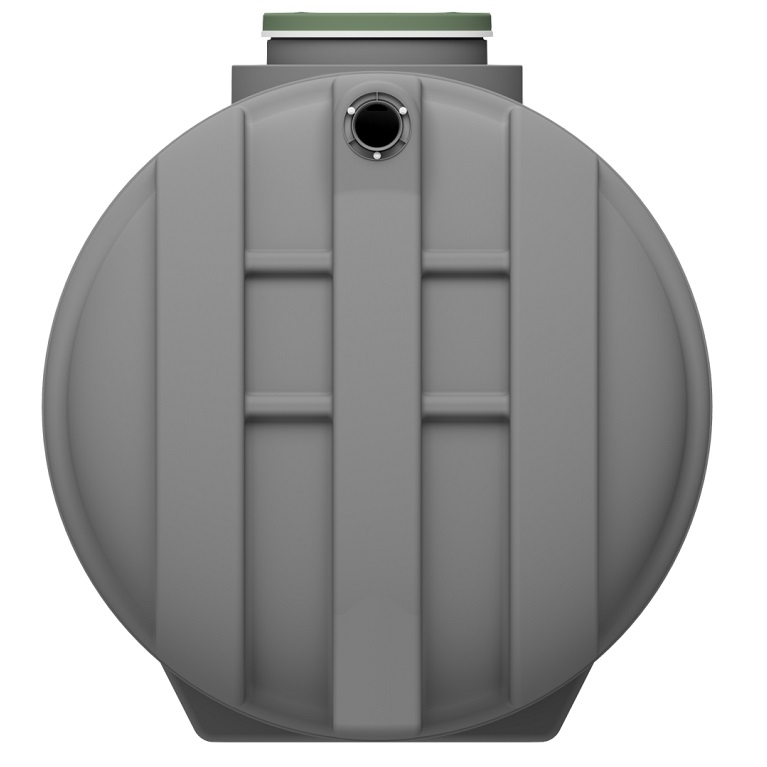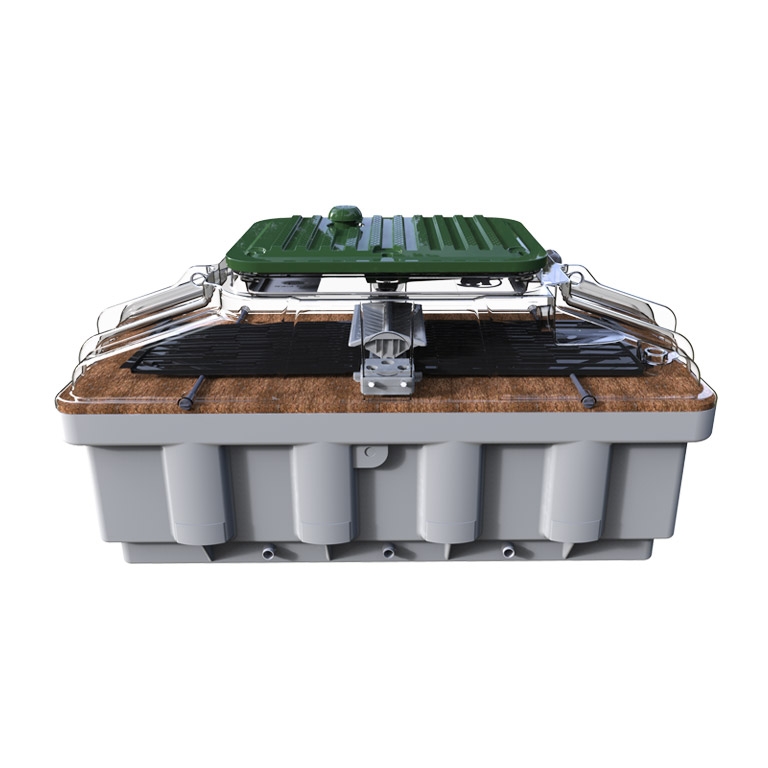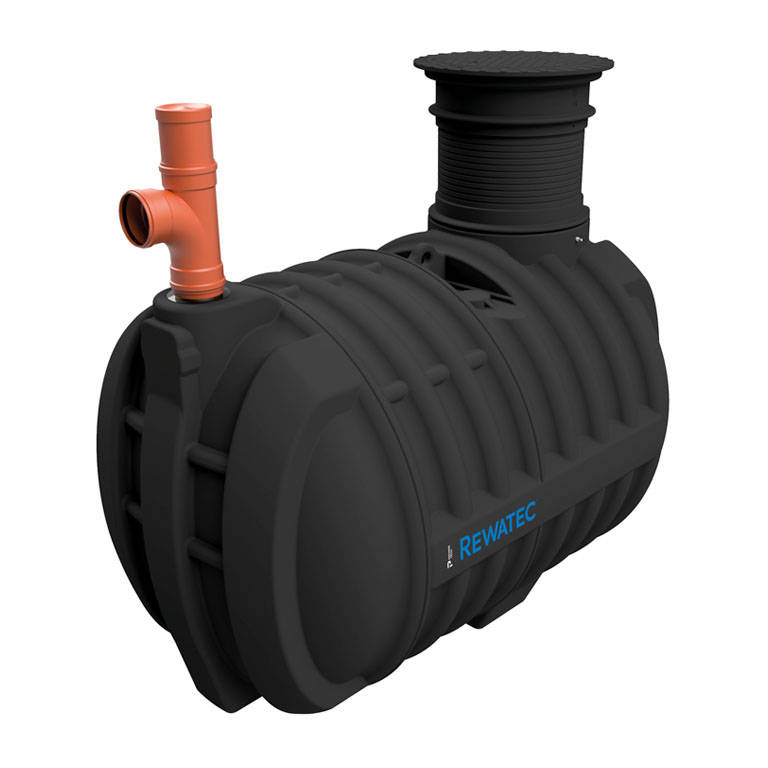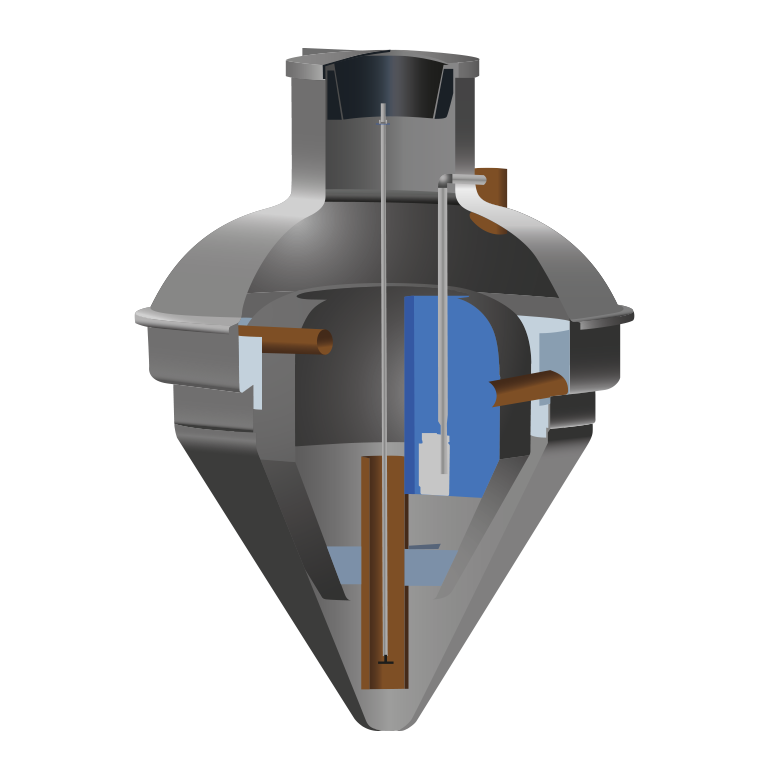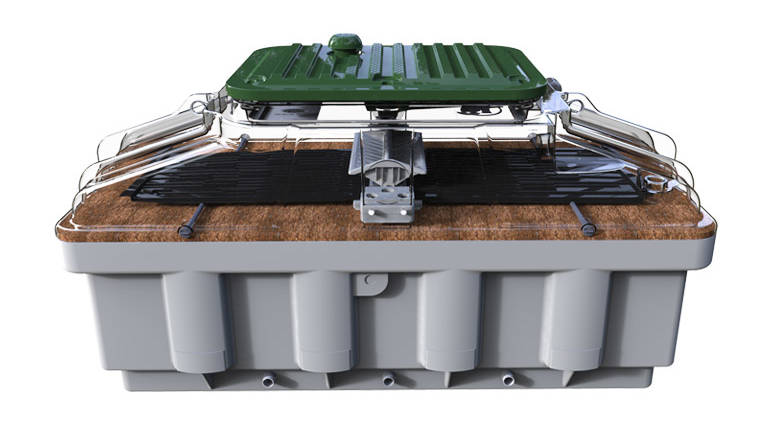What is a septic tank and how does it work?
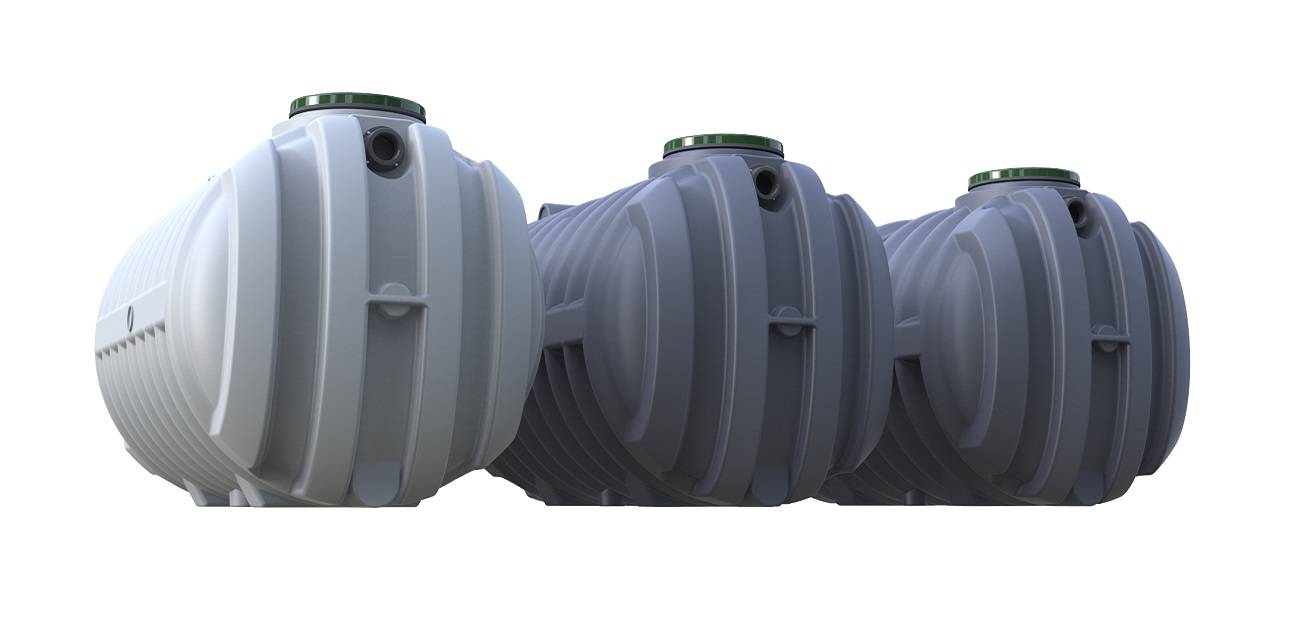
A septic tank is an economical system that is used for the partial treatment of wastewater generated from domestic properties and commercial buildings that aren’t connected to the main sewage system.
If you have questions about what septic tanks are, how they work and what they are used for, the answers you need are here.
Let's start at square one:
- Your septic tank is made up of a series of components that are used to treat wastewater on-site, most likely in a rural area that is off the main sewage network (off-mains).
- Your septic tank works by collecting wastewater from your home, retaining solid materials, removing wastewater pollutants, and returning the treated effluent to your property’s soil or the surrounding environment via infiltration.
- Across Ireland, people use many different terms to describe septic tanks. The most common are sewage tanks, septic systems, residential septic tanks and sewage treatment plants. Note that a sewage treatment plant is a different system than a septic tank.
Now that you have the basics under your belt, read on to discover how standalone septic tanks and more advanced treatment systems work.
Table of contents
How does a septic tank work?
A septic tank works by collecting wastewater from your toilets and drains. It retains solids and scum within the tank. While some of the more resilient pollutants are biologically treated, the effluent liquid from your septic tank is driven to a drainage field.
In your drainage field, bacteria further break down the residual pollutants and the now fully-treated effluent returns to your property’s soil and groundwater.
That is the high-level answer. For a fuller understanding of how a standalone septic tank works, we can break the wastewater treatment process into 10 steps:
- Domestic sewage from your toilet (called blackwater) and wastewater from your shower, bathtub, sink, washing machine, and dishwasher (called greywater) runs into the main drainage pipe that leads to your septic tank.
- Heavier solid matter sinks to the bottom of your septic tank and forms sludge.
- Lighter matter such as fats, oils, and greases (FOGs) float to the top of your septic tank to form scum.
- Anaerobic organisms (microorganisms that do not need oxygen) in your septic tank feed on organic wastewater pollutants, converting them to inert matter.
- Cleaner liquids pass through an effluent filter (or other retention mechanisms), further purifying the effluent.
- The filtered liquid flows through a pipe toward the drainage field (or a secondary filter).
- The perforated pipes from your drainage field allow the partially treated wastewater to seep into a layer of gravel.
- The microorganisms present, as well as other subsurface mechanisms, further break down contaminants as wastewater percolates through the layer of gravel and into your native soil.
- In your native soil, any remaining impurities are removed. These impurities may include harmful bacteria, parasites, viruses, and nutrients.
- Treated wastewater reaches groundwater, which eventually drains into nearby streams, rivers, and lakes.
How a septic tank works with a secondary filter
A passive secondary filter (such as the Ecoflo biofilter) works by receiving wastewater from your septic tank and lowering concentrations of organic matter, suspended solids, pathogens, and, in some cases, nutrients like phosphorus or nitrogen.
Using natural forces and mechanisms, treatment of the wastewater occurs in the filter itself. Then, the system discharges the purified effluent downstream, where it eventually returns to your soil, a ditch, or a watercourse.
Septic tanks with a secondary treatment filter are most often used on properties with:
- limited or no space for a conventional drainage field
- poor drainage field soils with water oversaturation or similar
- very high permeability soils that limit effective treatment via infiltration
- impermeable soil or bedrock that prevents treated wastewater from infiltrating into the ground
- shallow soil that is unsuitable for wastewater percolation
- sensitive environments that require additional wastewater treatment processes to further improve the final effluent
- strict local environmental regulations
What are the parts of a septic system?
To add depth to your understanding of how a septic system works, you may want to take a closer look at the functions of its individual parts.
A septic tank has four main parts: a pipe that carries wastewater from your home, the actual septic tank, a pipe that connects your septic tank to your drainage field (or secondary system), and the drainage field (or secondary system).
Septic tank inlet pipe
The plumbing in your home is connected to the main sewer line that slopes toward your septic tank. In most cases, the sewer line is constructed from PVC (plastic). When you flush your toilet, take a shower, wash clothes, or do the dishes, the wastewater generated enters the sewer line and flows into your septic tank.
Septic tank
A septic tank is an underground and watertight container made of concrete, polyethylene or fibreglass. It provides primary wastewater treatment with the help of naturally occurring forces and bacteria that break down solids and organic material. The tank then pipes partially purified effluent downstream for further treatment or final dispersal.
A septic tank may seem complicated, but the way it works is actually quite simple. It holds the wastewater long enough for it to separate into three layers:
- Top layer
Fats, oils, and greases float to the surface and form a layer of scum.
- Bottom layer
Solid particles settle on the bottom of the tank and form sludge.
- Middle layer
Liquid wastewater flows between the scum and sludge layers. It exits the tank through a pipe that leads to your advanced treatment system or septic drain field.
Across all three stages, helpful bacterial colonies are formed to break down most of these solids and turn them into inert matter.
Effluent filter
An effluent filter, such as those present in the Rewatec septic tank, is a cylindrical device installed before the outlet. It traps suspended solids (fine particles) that would otherwise clog your drainage field or secondary treatment filter.
Effluent filters need to be regularly cleaned. The exact timing depends on the design of your septic tank and how much you use it. As a minimum, we recommend that you ask a professional to clean your filter every time they service or desludge your tank.
Please note that not all septic tanks have an integrated effluent filter however they do all have a separation mechanism such as a baffle wall.
Septic tank vent
A septic tank must be continuously vented. The premises’ vent stack(s) is the conventional route that allows gases to safely escape your septic tank.
If a vent stack is not present or it is not in working order, a ventilation mechanism must be introduced.
Bacteria in your tank generate gases as they break down wastewater contaminants. The most common is hydrogen sulfide, (which smells like rotten eggs). These gases must be released to prevent a build-up of pressure that could stop or reverse the flow of wastewater.
Septic tank access port
An access port or access lid is a covered opening on the top of your septic tank. This opening allows waste removal professionals to empty your septic tank. It also provides easy access to important components, including the effluent filter where applicable.

Septic tank riser
A septic tank riser is a shaft made from concrete, polyethylene, or fibreglass. When your septic tanks’ access ports are below ground level, you can install a riser to bridge the gap and allow entry into your system. Otherwise, you would have to excavate the tanks' lids before every desludging.
Septic tank outlet pipe
When raw wastewater enters your septic tank, an equal volume of liquid exits (liquid displacement) through an outlet pipe that leads to a secondary treatment system or your drainage field.
If your property has uneven terrain, such as slopes or embankments, then gravity alone may not be enough to move wastewater through the outlet pipe. Your septic tank will need to include a pump station (sometimes called a sewage pumping station) that pressurises the flow of wastewater from your septic tank.
Drainage field
A drainage field is an underground network of perforated pipes that receives wastewater from your septic tank.
It works by accepting, treating, and dispersing wastewater. After wastewater seeps through the perforated pipes in your drainage field, it percolates through a bed of gravel and then into your native soil. Bacteria in these layers break down contaminants and the clean wastewater is discharged into the ground.
A secondary treatment system further removes wastewater contaminants before discharging the fully treated effluent to a watercourse, groundwater, or drainage field.
There is a wide range of advanced septic systems on the market, all with unique designs and components. Despite the differences, we can still break the most popular systems and their parts into two main categories:
- Media filters
Wastewater passes through a filter that traps and removes contaminants. Traditional filtering media include sand or synthetic materials like foam, fabric, or textiles. Coconut husk fragments are the most sustainable choice, which is why we use them in our Ecoflo biofilter.
- Aerobic treatment units (ATUs)
Wastewater is aerated with an air compressor or blower. This step supports the growth of aerobic bacteria (bacteria that need oxygen) that digest solids and other wastewater contaminants.


Reach out to our septic experts
Looking for a new septic system? Need your old one inspected? Or just not sure where to start?
We're here to help! Send us a few quick details and we'll give you free advice and recommendations based on your needs.
Related products
